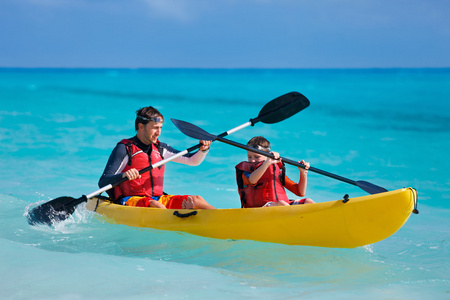- English
- Español
- Português
- русский
- Français
- 日本語
- Deutsch
- tiếng Việt
- Italiano
- Nederlands
- ภาษาไทย
- Polski
- 한국어
- Svenska
- magyar
- Malay
- বাংলা ভাষার
- Dansk
- Suomi
- हिन्दी
- Pilipino
- Türkçe
- Gaeilge
- العربية
- Indonesia
- Norsk
- تمل
- český
- ελληνικά
- український
- Javanese
- فارسی
- தமிழ்
- తెలుగు
- नेपाली
- Burmese
- български
- ລາວ
- Latine
- Қазақша
- Euskal
- Azərbaycan
- Slovenský jazyk
- Македонски
- Lietuvos
- Eesti Keel
- Română
- Slovenski
- मराठी
- Srpski језик
What is the difference between rowing, kayaking, and rowing?
2024-04-24
Kayaking is the collective name for kayaks and rowing boats. Kayaks originated from the skin boats made by the Eskimos in Greenland, North America, using animal skins wrapped on wooden frames. Rowing originated in Canada, and rowing originated in the United Kingdom.
There is a way to identify it at a glance: the rowing boat is traveling with its back to the target direction; the kayak is paddling left and right in a sitting position; the rowing boat is paddling unilaterally in a kneeling position. A rowing boat has an oar rack installed on the side of the boat, so you can only row step by step. However, kayaks and rowing boats do not have this device, so you can row as you like.
Boats made differently
Rowing includes single, double, four and eight-person events, divided into single oars and sculls, with a distance of 2,000 meters. In common events, the boats are named according to the number of people plus a single sculls, such as single sculls, double sculls, four-person sculls, eight-person sculls, etc. There are also professional helmsmen on multi-person boats.

Different competition formats
Kayaking is divided into single, double and four-person events, while rowing is only divided into single and double events. Both have three different distances of 200 meters, 500 meters and 1000 meters, including flat water racing and skills competition slalom. Two game formats. Among them, the slalom event is more technical, and the athletes' driving of kayaks can better reflect people's challenge and adaptability to nature.
Rowing races in natural waters are greatly affected by the weather, and the weather even differs between the two groups before and after the race. Therefore, there is no world record for rowing results, and the competition commentary uses the "Olympic best results."
The principles of force generation are different
Rowers rely on the sliding seat in the cabin, hold the oar shaft buckled on the oar frame, and travel through lateral lever movements.
Kayakers sit in a seated position, use their feet to control the rudder, and use a double-bladed paddle to paddle alternately on either side of the boat. The rower kneels on one leg in the boat and uses a single oar with a blade on one end to paddle against the side of the boat.
Athletes have different requirements
Although rowing, kayaking, and rowing are all events in which physical fitness determines victory or defeat, the three have different quality requirements for athletes. Due to the different characteristics of the events, rowing generally requires players to be tall, have long arms, and have good cardiopulmonary function, while kayaking puts more emphasis on good explosive power and balance.
In addition, compared to rowing, kayaking is more involved in people's daily life. As an outdoor recreational water sport, kayaking allows participants to experience and enjoy challenges and adventures in nature.



